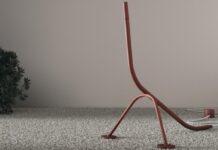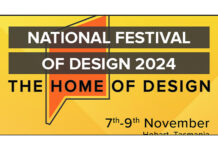Artisan David Tragen shares his views on when it’s worth the time and investment to work with a designer-maker on pieces for your home.
Whether you are a multi-millionaire or somebody living on the bread line, everybody wants to feel like they are getting value for money. So when you compare the price of individually made items, usually created by an artisan, with those made in a factory, the price difference is often so significant that it doesn’t seem worth exploring further.

Generally speaking, larger scale production runs will bring economies of scale which can then be passed onto the end consumer. So surely only larger companies can survive in a world of supply and demand? As a designer and artist myself, creating bespoke designs as well as both open and limited edition pieces, I wanted to shed some light on why it may be worth delving a little deeper before dismissing products, based on price alone.
Creativity as a driver
Larger companies will often choose designs that are relatively straightforward to produce in order to keep their costs down. For example curved surfaces are much more time consuming to produce than flat ones and very often don’t lend themselves to minimising costs. However the artisan may put creative expression very high on their priority list (I certainly do) and therefore keeping costs down by not producing curved work would feel like too big a compromise.

Customisation or bespoke designs
Whilst the business model of the artisan may not be about economies of scale, the fact that they make each piece one at a time, may allow them more flexibility to customise their work to your specifications. Customisation comes in many forms, it could be as simple as offering you an exact paint colour to match your wall tiles or creating a longer version of an existing design. The most complex form of customisation would be to create a completely new, bespoke design tailored to your exact needs. Generally speaking, the smaller the company is, the more likely they will be to entertain some degree of customisation. Whilst a cost will usually be associated with any changes, it is easier for a small boat to change direction than an oil tanker.
Exclusivity
Not all of the larger companies will choose to over simplify the end product to keep costs down. However what the micro business offers is exclusivity by the fact that they can only produce a limited number of items every year. If your uniqueness is expressed not only by your personality but also by the items you buy, then this must be worth considering.
The limitations of digital production
Digital production has made huge steps forward in the last 10 years and machines can now carve or 3D print some of the most complex forms. However there are still objects that only humans can produce. For example there are times when the thickness or profile of a piece can be too delicate for a CNC milling machine to tackle. I know that making the fine end detail on Genie (see profile picture and below) would be impossible by CNC as both the vibrations of the machinery as well as the grain direction, would cause the tip to simply shatter into smithereens.

Lost in Translation
Working with a designer-maker for example, who owns their own business, means that each client is important to them. If there is one person responsible for sales, design, making the item and shipping it, your wishes are less likely to be lost when passed from person to person. Having this direct contact with the designer and maker will give you more of a sense of connection to the final piece.
Accountability
Finding an employee who cares about the quality of production in same way as the “one man band” is like finding a needle in a haystack. Whilst any successful company will make sure that quality control is part of their process, only the person making the piece will know whether all the procedures have been followed correctly.
By way of example, a standard woodworking glue needs to be clamped within 10 minutes of being applied to a woodworking joint, otherwise the glue will not be as effective. On the surface, the joint of the chair leg may seem fine. However a few years later, when your child tries his balancing act on two legs, the joint may fail. The designer-maker will be far more invested than an employee in a larger company in ensuring that the piece is made to last a lifetime.

Pride and job satisfaction
If accountability is the proverbial “stick” to ensure that standards are kept high, then pride and job satisfaction are the “carrot”. Having direct contact with the end consumer and knowing that they are pleased with my work, really motivates me. People sometimes ask me if it difficult to say goodbye to one of my creations, especially if it has taken many days if not weeks to make. The positive feedback I get from clients makes all the hard work worth it and knowing that it brings pleasure to a wider audience is a fantastic feeling. Some of the work will inevitably go unnoticed: when gluing boards of wood together, side by side, I will mock up various permutations and to see which the best match in terms of grain figuring and wood tone. The client will only see the end results and will be unaware of the thought that has gone into it but knowing that I have done the best job I can provides me with job satisfaction.
The story provides meaning
By working with one person, you not only know that your wishes won’t be lost in translation and that they are accountable for their work but it doesn’t just end there. By understanding more about the journey of the artist in not only their development but also the creation of each product, it brings more meaning to what you are buying. Perhaps their back story is particularly inspiring and helps you to feel more connected to them as a person and this will bring extra value to your purchase. Social media has become an increasingly popular way for businesses to communicate with the public and show some of the behind the scenes information which will help to give you a fuller picture.

Visit davidtragen.co.uk for more information.




























